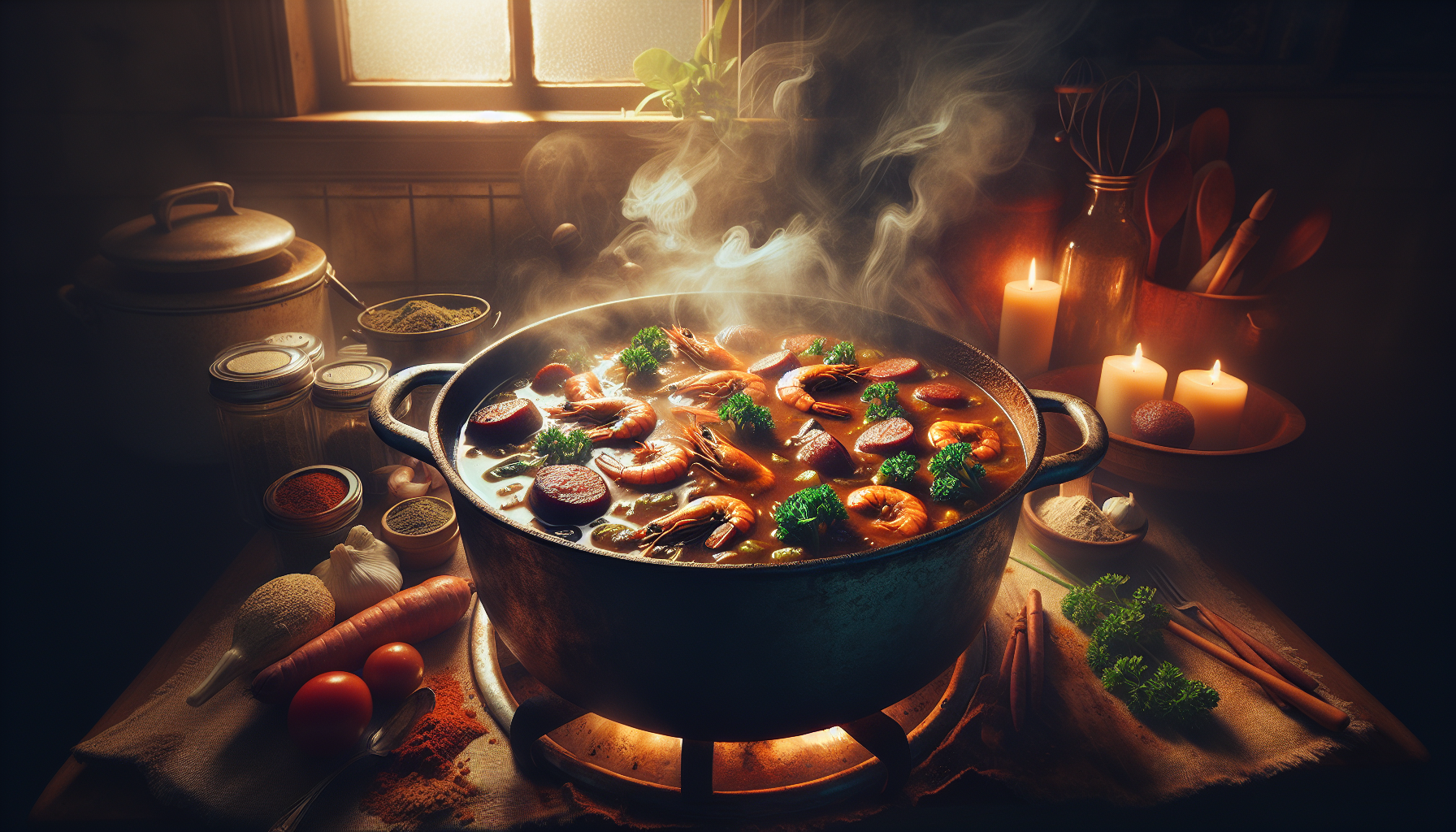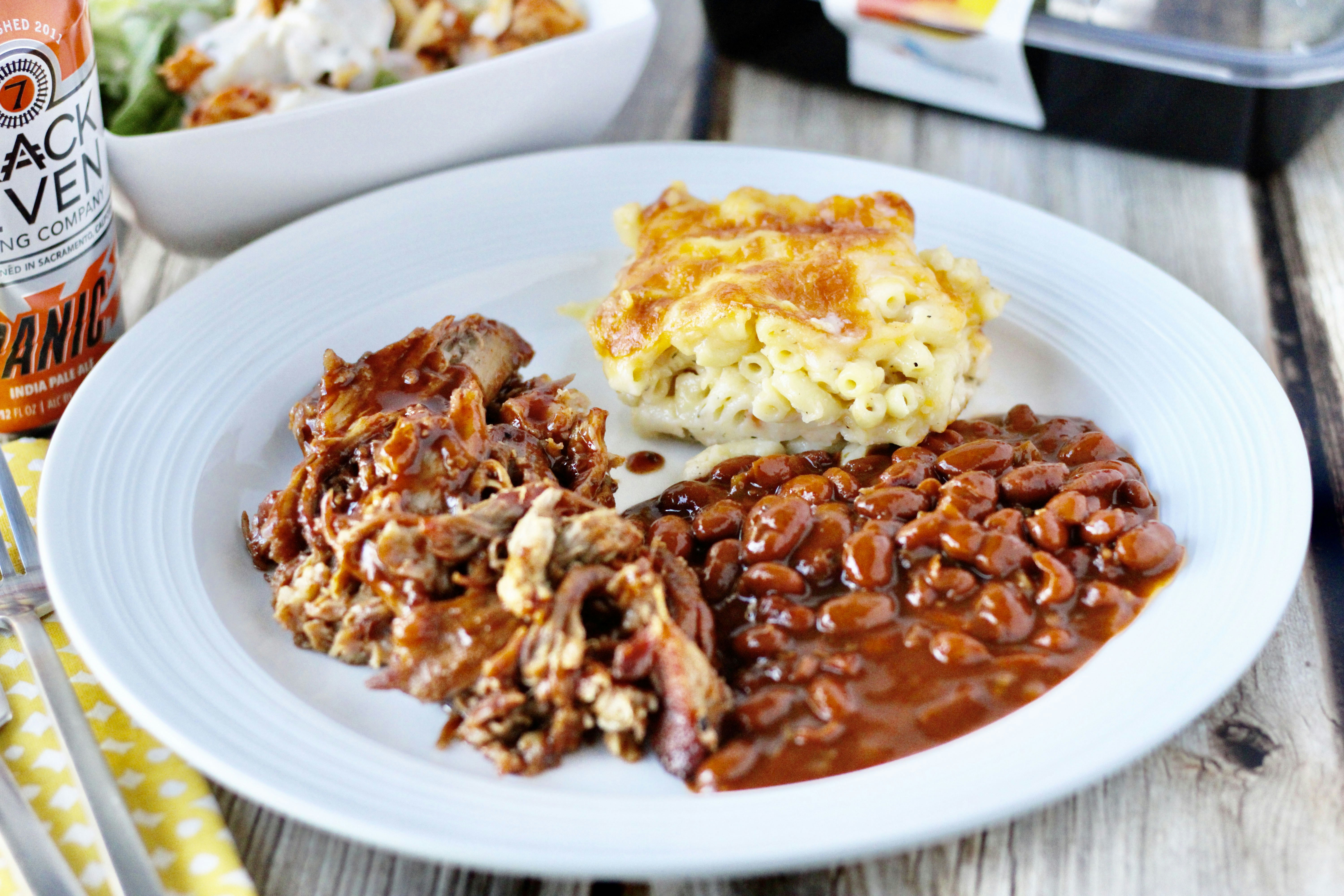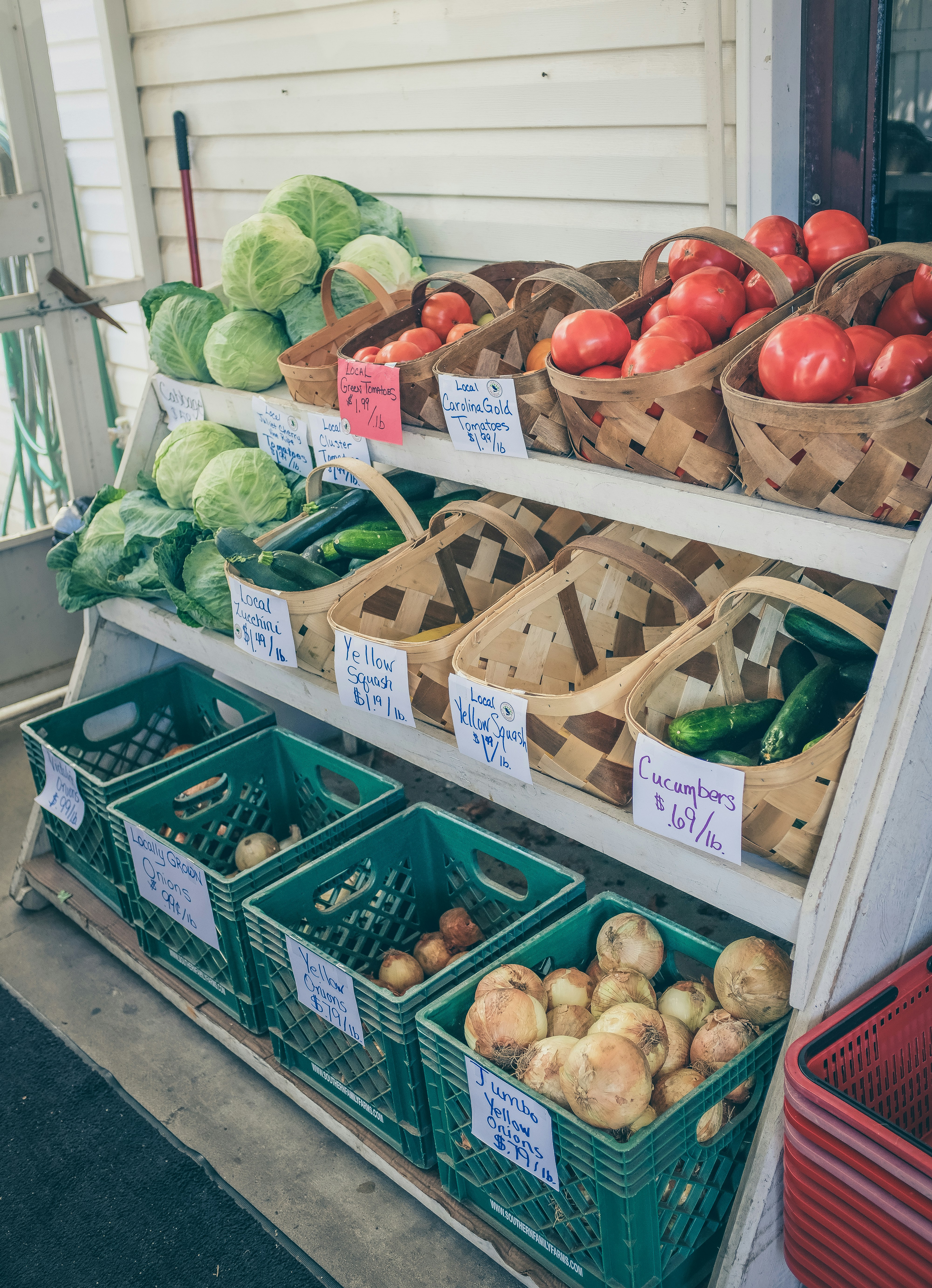If you’re a lover of bold flavors and fiery dishes, you might be wondering if Southern food is known for its spicy kick. Well, you’re in for a treat! This article will explore the vibrant world of Southern cuisine and shed light on whether or not it tends to embrace the heat. Get ready to tantalize your taste buds as we delve into the spices, seasonings, and secret ingredients that make Southern food a flavorful adventure. Get ready to embark on a mouthwatering journey through the South!
Understanding Southern Cuisine
Southern cuisine is a beloved and distinctive culinary tradition that has a rich history and diverse flavors. Originating from the southern regions of the United States, this cuisine is known for its hearty, comforting dishes that are packed with flavor. To truly appreciate Southern food, it is important to understand its origins, key ingredients, and the influence of other cuisines.
Origins of Southern Food
Southern food finds its roots in the traditional cooking of the American South, which was heavily influenced by Native American, African, and European culinary traditions. Native Americans introduced ingredients such as corn, beans, and squash, which became staples of Southern cuisine. African slaves brought their unique cooking techniques and flavor profiles, including the use of spices and seasoning. European settlers contributed ingredients like wheat, sugar, and livestock, which helped shape the Southern food we know today.
Key Ingredients Used
Southern cuisine is known for its use of fresh and seasonal ingredients. Some key ingredients that are commonly used in Southern dishes include cornmeal, butter, bacon, buttermilk, okra, collard greens, pecans, black-eyed peas, and sweet potatoes. These ingredients play a crucial role in creating the robust flavors and textures that are characteristic of Southern food.
Influence of Other Cuisines
Southern cuisine has been influenced by a variety of other culinary traditions, resulting in a unique blend of flavors. The traditional ingredients and cooking techniques of African, Native American, and European cuisines have all contributed to the evolution of Southern food. For example, African spices and seasonings, like cayenne and paprika, have become integral to many Southern dishes. Additionally, the French and Spanish influences in areas like Louisiana have added a touch of elegance and complexity to Southern cuisine.
Common Misconceptions About Southern Food
There are several misconceptions surrounding Southern food that need to be addressed. While it is true that Southern food can be packed with flavor, there is more to it than just spiciness and fried foods. It is important to dispel these misconceptions to truly appreciate the diversity and depth of Southern cuisine.
Spiciness as the Defining Feature
While Southern food can indeed be spicy, it is not the sole defining feature of the cuisine. The presence of spices and seasonings varies from dish to dish, and not all Southern dishes are fiery hot. Flavors vary greatly, and many Southern dishes focus more on the balance of flavors and the use of aromatic herbs and spices rather than overwhelming the palate with spiciness.
Limitations to Fried Foods
Fried foods, such as fried chicken and catfish, are undeniably popular components of Southern cuisine. However, it is an oversimplification to assume that all Southern food is fried. The cuisine encompasses a wide range of cooking techniques, including grilling, roasting, and braising. Soups, stews, and slow-cooked dishes are also common in Southern cooking.
Oversimplification of Southern Flavors
Another common misconception is that Southern flavors can be reduced to a single profile. In reality, Southern cuisine is incredibly diverse, with different regions and states having their own unique flavor profiles. The flavors can range from tangy and spicy in Louisiana cooking to rich and savory in dishes from the Carolina coast. It is important to recognize the complexity and subtleties of Southern flavors rather than generalizing them.
Spiciness in Southern Food
Spiciness plays a significant role in Southern cuisine, providing a flavorful kick to many dishes. However, it is important to understand the role of spices, the level of heat in typical recipes, and the popular spicy foods in Southern cuisine.
Role of Spices in Southern Dishes
Spices are a key component of Southern cooking, adding depth and complexity to dishes. Commonly used spices include cayenne pepper, crushed red pepper, black pepper, garlic powder, and paprika. These spices not only add heat but also bring out the flavors of other ingredients.
Level of Heat in Typical Recipes
The level of heat in Southern food can vary greatly depending on personal preference and the specific dish. Some recipes may be mild, with just a hint of spiciness, while others can be incredibly hot. However, it is worth noting that not all Southern dishes are designed to be excessively spicy. There are plenty of flavorful options that offer a moderate level of heat.
Popular Spicy Foods in Southern Cuisine
Southern cuisine offers a plethora of spicy dishes that are beloved by many. Jambalaya, a Creole dish from Louisiana, combines rice, vegetables, and spices with a variety of proteins such as shrimp, sausage, or chicken. The iconic Nashville hot chicken, known for its fiery flavor, is another favorite spicy dish. Other spicy Southern classics include gumbo, shrimp and grits, and spicy barbecue sauces.
Variety in Southern Cuisine
Contrary to popular belief, Southern cuisine offers a wide variety of flavors beyond just spicy options. The cuisine showcases an array of taste profiles, with both spicy and non-spicy food options to satisfy every palate. It is important to acknowledge the range of flavors present in Southern cuisine, explore non-spicy alternatives, and appreciate the regional variations that make this cuisine so diverse.
Range of Flavors Present
Southern cuisine is a melting pot of flavors, with dishes ranging from tangy and sweet to smoky and savory. The use of different herbs, spices, and seasonings creates a unique taste experience in each dish. From the rich and creamy flavors of shrimp and grits to the tangy and vinegar-based barbecue sauces of North Carolina, there is a flavor to suit every preference.
Non-Spicy Food Options
While spiciness is an integral part of Southern cuisine, there are plenty of non-spicy food options available. Classic dishes like biscuits and gravy, fried green tomatoes, cornbread, and collard greens offer a hearty and delicious experience without the heat. These dishes highlight the comfort and soulful nature of Southern cooking.
Regional Variations Within Southern Cuisine
Southern cuisine is not a monolithic entity; it is influenced by regional differences and local ingredients. Each region within the Southern United States has its own culinary traditions and flavor preferences. For example, the Lowcountry cuisine of South Carolina is heavily influenced by Gullah Geechee culture and features dishes like shrimp and grits, while the cuisine of the Mississippi Delta is known for its soul food classics like fried chicken and black-eyed peas. Exploring these regional variations allows for a deeper understanding and appreciation of Southern cuisine.
Factors That Influence the Heat Level
Several factors contribute to the heat level of Southern dishes. Understanding these factors can help individuals tailor their spice preferences and appreciate the subtle nuances of Southern cuisine.
Seasoning Preferences
One of the key factors that influence the heat level of Southern food is personal seasoning preferences. Some individuals may enjoy a milder spice level, while others may prefer their food to be spicier. It is essential to adjust spice levels according to personal taste preferences in order to fully enjoy the flavors of Southern cuisine.
Impact of Cooking Methods
The cooking methods used in Southern cuisine can also impact the heat level of the dishes. Deep-frying, for example, can mellow out the spiciness of certain ingredients and create a more balanced flavor profile. On the other hand, grilling and blackening techniques can intensify the heat level, resulting in bolder and spicier flavors. The choice of cooking method plays a crucial role in determining the overall spiciness of a dish.
Role of Fresh and Dried Spices
The use of fresh and dried spices in Southern cooking can significantly impact the heat level of a dish. Fresh peppers, such as jalapenos or habaneros, are known for their spicy kick, while dried spices like cayenne or crushed red pepper can add an extra layer of heat. The combination of fresh and dried spices allows for a careful balance of flavors, providing a well-rounded and enjoyable dining experience.
Spices Commonly Used in Southern Food
Southern cuisine relies on a variety of spices to enhance the flavor profile of its dishes. While there are numerous spices used, some particular ones stand out for their frequent inclusion in Southern cooking.
Cayenne Pepper
Cayenne pepper is a staple spice in Southern cuisine, known for its fiery heat and distinctive flavor. It adds a vibrant kick to dishes such as gumbo, jambalaya, and spicy barbecue sauces. The versatility of cayenne pepper makes it an essential ingredient for those seeking to add a touch of spiciness to their Southern dishes.
Crushed Red Pepper
Crushed red pepper flakes are another popular spice used in Southern cooking. These flakes are made from dried red chili peppers and add a subtle heat to dishes. They can be sprinkled on top of pizza, mixed into pasta sauces, or incorporated into Southern classics like cornbread or collard greens.
Black Pepper and Others
While black pepper may not be the spiciest of spices, it still plays a significant role in Southern cuisine. It adds a subtle heat and depth of flavor to dishes without overpowering other ingredients. Other spices commonly used in Southern cooking include paprika, garlic powder, onion powder, and chili powder. These spices contribute to the rich flavor profiles and create a well-rounded taste experience.
Relation Between Spiciness and Taste
Spiciness in Southern food is not just about adding heat; it is about achieving a balance of flavors and enhancing the overall taste experience. Understanding how spiciness contributes to the palate and perception of taste is crucial in fully appreciating Southern cuisine.
Balancing Heat with Other Flavors
In Southern cuisine, spiciness is not intended to overpower other flavors; instead, it acts as a complementary element. Spices and seasonings are carefully selected and used in moderation to create a harmonious blend of flavors. The heat from spices like cayenne or crushed red pepper adds a subtle kick that enhances the taste of other ingredients, creating a well-rounded and satisfying dish.
Spiciness Contributing to Overall Palatability
The addition of spiciness to Southern dishes contributes to their overall palatability. The heat can stimulate the taste buds and enhance the perception of flavors, making the dish more enjoyable. It adds depth and complexity to the culinary experience, elevating the dish from ordinary to extraordinary.
Perception of Spiciness by Different People
It is worth noting that the perception of spiciness can vary from person to person. Factors such as individual tolerance, exposure to spicy foods, and genetic predisposition can influence how spicy a particular dish is perceived. What may be mild to one person could be considered incredibly spicy by another. This diversity in spice tolerance adds to the dynamic nature of Southern cuisine and the personal experience of enjoying it.
Health Implications of Spicy Southern Food
Spicy Southern food not only pleases the palate but also offers potential health benefits. However, it is important to be mindful of the risks associated with excessive spice intake and consider the suitability of spicy Southern food for different dietary needs.
Potential Health Benefits
Spicy Southern food can offer various health benefits when consumed in moderation. The capsaicin found in peppers, such as cayenne, has been associated with a range of positive effects, including improved digestion, increased metabolism, and pain relief. Additionally, the use of spices like garlic and turmeric in Southern cuisine provides antioxidant and anti-inflammatory properties, which can support overall health.
Risks Associated with Excessive Intake
While moderate spice intake can be beneficial, excessive consumption of spicy Southern food may have some downsides. Spicy foods can exacerbate conditions such as heartburn, acid reflux, and irritable bowel syndrome (IBS) in individuals who are sensitive to spices. It is important to be mindful of individual tolerance levels and make informed choices accordingly.
Suitability for Different Diets
Spicy Southern food can be enjoyed by individuals following various dietary needs. The cuisine offers a range of options, including vegetarian and vegan dishes, as well as gluten-free alternatives. However, it is essential to consider personal dietary restrictions and make modifications as necessary. Consulting with a healthcare professional or nutritionist can provide guidance on incorporating spicy Southern food into specific diets.
Influence of African and Native American Cuisines on the Spiciness of Southern Food
The spiciness in Southern cuisine can be attributed in part to the influence of African and Native American culinary traditions. These cultures introduced various spices and seasonings, adding a fiery kick to Southern dishes and shaping the contemporary spiciness we associate with Southern cuisine today.
Historical Aspect of Spice Use
African slaves brought with them a rich culinary heritage that included the use of spices and seasonings. Their expertise in blending flavors and creating robust dishes greatly influenced Southern cuisine. Similarly, Native American tribes, such as the Choctaw, Cherokee, and Creek, introduced ingredients like chili peppers and black pepper, which became integral to Southern cooking.
Impact on Contemporary Southern Dishes
The African and Native American influences are still very much present in modern Southern cuisine. The use of spices like cayenne pepper, paprika, and black pepper can be traced back to these culinary traditions. The incorporation of African and Native American flavors adds depth and complexity to Southern dishes, enhancing the overall taste experience.
Incorporation of Fiery Flavors
The African and Native American influences have contributed to the prevalence of fiery flavors in Southern cuisine. The spiciness in dishes like gumbo, jambalaya, and Cajun-seasoned meats can be attributed to the spices and seasonings introduced by these cultures. The fusion of these flavors with European cooking techniques and ingredients has resulted in the bold and vibrant Southern cuisine we know and love today.
How to Modify Spiciness in Southern Cuisine
For those who prefer less spice or have a low tolerance for heat, there are ways to modify the spiciness of Southern dishes without sacrificing flavor. Whether you want to reduce the spice during cooking or add more heat to your dishes, there are options available for everyone.
Reducing Spice During Cooking
To reduce the spice level in Southern dishes, you can start by adjusting the amount of spices and seasonings used. Gradually decrease the amount of cayenne pepper, crushed red pepper, or other spices called for in a recipe. This allows you to mellow out the flavors and create a milder dish without compromising the overall taste. Alternatively, you can opt for spices with less heat, such as paprika or smoked paprika, to add depth without overwhelming spiciness.
Adding More Heat to Dishes
On the other hand, if you enjoy spicier food, there are ways to amp up the heat in Southern dishes. Adding additional cayenne pepper, crushed red pepper, or hot sauce can provide a fiery kick to your favorite recipes. Keep in mind that spices can intensify over time, so it is advisable to gradually increase the heat to avoid overpowering the dish. Taste as you go and adjust accordingly to achieve your desired level of spiciness.
Alternatives for Those with Spice Intolerance
For individuals with spice intolerance or sensitivity, there are alternative ingredients and methods that can still provide flavor without overwhelming heat. Opt for milder spices like paprika, which adds a smoky and slightly sweet flavor to dishes. Garlic powder, onion powder, and herbs like thyme and oregano can also contribute to the overall taste without relying heavily on spiciness. Additionally, incorporating ingredients like vinegary barbecue sauces, tangy pickles, or creamy dressings can help balance flavors and offset the heat.
In conclusion, Southern cuisine offers a delightful array of flavors, with spiciness playing a significant role but not defining the entirety of the cuisine. Understanding the origins, key ingredients, and influence of other cuisines in Southern food highlights the diversity and the rich tapestry of flavors it offers. While misconceptions about spiciness, limitations to fried foods, and oversimplification of Southern flavors persist, it is important to explore the variety in Southern cuisine, the factors that influence the heat level, and the health implications associated with spicy Southern food. The influence of African and Native American cuisines on spiciness, as well as the ability to modify spiciness in Southern dishes, further enhance the appreciation and enjoyment of this beloved culinary tradition. So, embrace the flavors, savor the spice, and take a journey through the distinct tastes of Southern cuisine.




